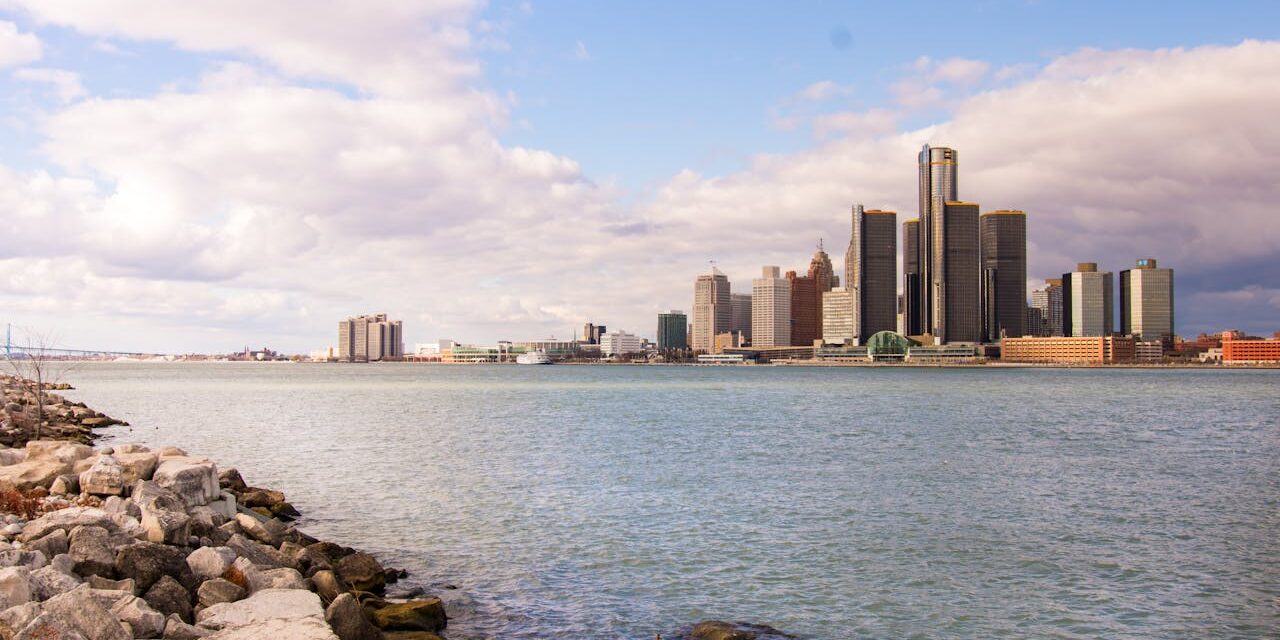Michigan, known for its contributions to the automotive industry and its diverse cultural heritage, has a rich and complex history.
From its early days of indigenous habitation and European exploration to its pivotal role in industrialization and the Civil Rights Movement, Michigan’s history is marked by significant events and diverse influences.
Below, we explore Michigan’s history, covering its foundation, key historical events, and notable landmarks.
Table of Contents
Early History
Indigenous Inhabitants and European Exploration
Before European settlers arrived, Michigan was inhabited by various Native American tribes, including the Ojibwe, Odawa, and Potawatomi.
- These tribes developed sophisticated societies with rich cultures, agriculture, and trade networks.
- French explorer Étienne Brûlé was the first European to visit Michigan in 1620, paving the way for further exploration and settlement by the French.
The indigenous peoples and early European explorers laid the groundwork for future settlements.
French and British Periods
Following the end of the French and Indian War in 1763, control of Michigan was transferred from France to Britain.
- The British assumed control of Fort Pontchartrain du Détroit peacefully in 1760.
- Under the 1783 Treaty of Paris, which concluded the American Revolutionary War, Britain ceded the Michigan territory to the United States, although American forces did not assume control until 1796.
These early European influences were significant in shaping Michigan’s cultural and economic landscape.
Key Historical Events
Statehood and Early Development
The U.S. Congress established Michigan Territory in 1805, designating Detroit as its capital.
- Michigan became the 26th state in the Union on January 26, 1837.
- The state’s early economy was driven by agriculture and fur trading, later transitioning to timber and mining.
Statehood marked a new era of political and economic development for Michigan.
The Automotive Industry and Economic Growth
Michigan became synonymous with the automotive industry in the early 20th century, particularly in Detroit.
- Pioneers like Henry Ford revolutionized manufacturing with the assembly line, producing affordable automobiles.
- Detroit, known as “Motor City,” became the heart of the U.S. automotive industry, home to major companies like Ford, General Motors, and Chrysler.
The rise of the automotive industry positioned Michigan as a key player in American industrialization.
Civil Rights Movement and Social Change
Michigan played a very big and significant role in the Civil Rights Movement, particularly in Detroit.
- The Great Migration saw a significant influx of African Americans that came from the South moving to northern cities like Detroit in search of better economic opportunities.
- Racial tensions culminated in significant events like the Detroit Race Riot of 1943 and the Detroit Uprising of 1967, highlighting the ongoing struggle for civil rights and social justice.
These movements significantly shaped Michigan’s social and political landscape.
Notable Landmarks
Mackinac Island
Mackinac Island, located in Lake Huron, is known for its historic sites and natural beauty.
- Key attractions include Fort Mackinac, built by the British during the American Revolutionary War, and the Grand Hotel, a National Historic Landmark.
Mackinac Island is a testament to Michigan’s rich historical and cultural heritage.
The Henry Ford Museum
Located in Dearborn, this museum complex includes exhibits on American innovation and Greenfield Village, which showcases historical buildings and artifacts.
- The museum highlights significant artifacts from American history, including the bus on which Rosa Parks made her stand for civil rights.
The Henry Ford Museum highlights Michigan’s role in American innovation and history.
Michigan State University
Founded in 1855 as one of the first institutions to teach scientific agriculture, it was initially known as the Agricultural College of the State of Michigan.
- The university is renowned for its contributions to research, education, and public service.
MSU represents Michigan’s commitment to education and research.
Governance
State Government
Michigan operates under a constitution adopted in 1963.
- The state government consists of the Executive, Legislative, and Judicial branches.
- The governor, currently Gretchen Whitmer, leads the executive branch.
The state government addresses the needs of Michigan’s diverse population and manages its resources effectively.
Local Government
Michigan’s local government structure includes counties, cities, and townships.
- Each level of government has specific responsibilities for services such as education, public safety, and infrastructure.
- Local governance ensures that the diverse needs of Michigan’s communities are met.
Effective local governance contributes to the overall well-being of the state’s residents.
Demographics and Growth
Population
As of 2023, Michigan’s population was approximately 10 million. The state’s demographic makeup reflects its history of immigration and cultural diversity.
Diverse demographics and steady growth reflect Michigan’s appeal as a place to live and work.
Education and Economy
Michigan is home to several prominent higher education institutions in the area, including the University of Michigan and Michigan State University.
- The state’s economy is diverse, with key sectors including automotive manufacturing, agriculture, and technology.
- Michigan is also known for its contributions to music, particularly Motown, which originated in Detroit.
These factors contribute to the state’s economic resilience and cultural vibrancy.
State of Michigan Q&A
Q: When was Michigan admitted to the Union?
A: Michigan was admitted to the Union as the 26th state on January 26, 1837.
Q: Who were the original inhabitants of Michigan?
A: The original inhabitants of Michigan included various Native American tribes such as the Ojibwe, Odawa, and Potawatomi. These tribes had established societies with rich cultures and trade networks.
Q: What role did Michigan play during the Civil War?
A: Michigan supported the Union during the Civil War. More than 90,000 Michigan men served in the war, and the state provided significant resources and support to the Union effort.
Q: What are some notable historical landmarks in Michigan?
A: Notable landmarks include Mackinac Island, the Henry Ford Museum, and Michigan State University. These sites highlight Michigan’s historical significance, contributions to innovation, and commitment to education.
Q: How is Michigan governed?
A: Michigan operates under a constitution adopted in 1963, with an Executive, Legislative, and Judicial branch. The governor leads the executive branch, and local governance is managed by counties, cities, and townships.
Q: What is the current population of Michigan?
A: As of 2023, Michigan’s population was approximately 10 million. The state continues to attract residents with its diverse culture, educational opportunities, and economic resilience.
Michigan’s rich history and commitment to cultural preservation make it a unique and vibrant state. By protecting its historical landmarks and fostering growth across various industries, Michigan honors its past while looking forward to a prosperous future.





